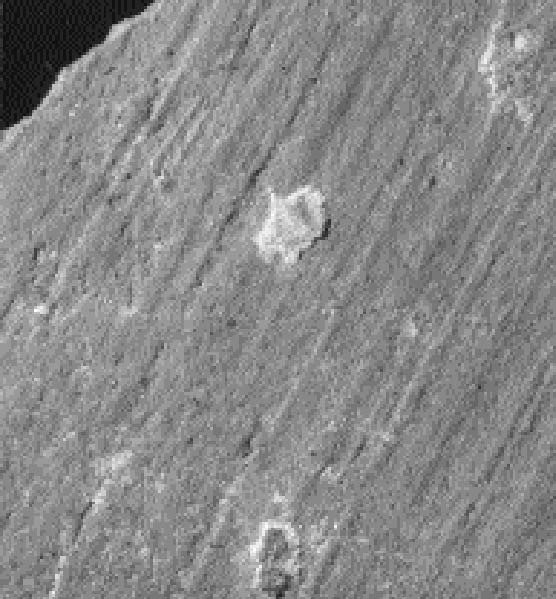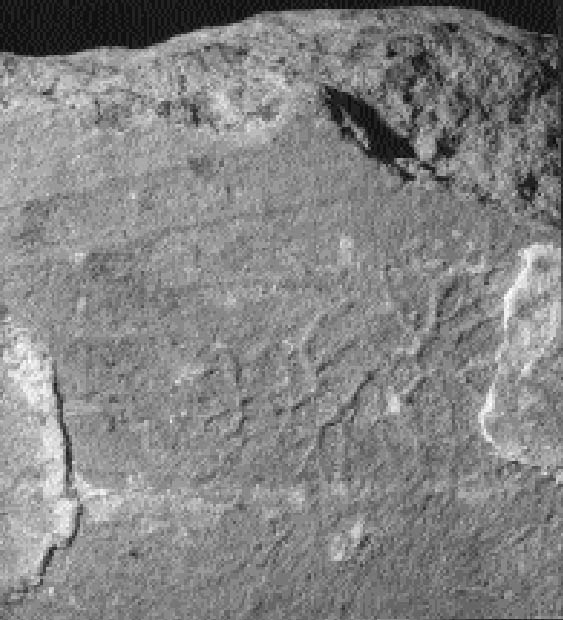STUCCOED TRIPOD VESSELS FROM TEOTIHUAC�N: AN EXAMINATION OF MATERIALS AND MANUFACTUREJessica M. Fletcher
3 EXAMINATIONThe first step in this research was to perform a visual examination of each sherd in order to characterize the structure of the stucco layers. Starting with the ceramic substrate, the process that was observed for producing a stucco-decorated vessel will be outlined. The treatment of the ceramic surface beneath the stucco was examined, when accessible, using a Wild M7A stereomicroscope. For the purposes of this study, the term “ground” refers only to the base layers of applied stucco decoration and not to the fired clay substrate. In 7 of the 13 sherds, the ceramic surfaces appear roughened specifically to receive decoration prior to firing. The rounded edges and surfaces (fig. 2) of the marks suggest that they were made while the vessels were still fairly wet. On two of the sherds (8027 and 8535), what appear to be the marks of fingers in wet clay (fig. 3) are visible. A crisper appearance of scrape marks would be more indicative of leather-hard clay. On three of the sherds, not enough of the surface was visible to characterize preparation techniques.
In some cases, stucco decoration was applied over surfaces not originally intended for this type of decoration. In most cases, the first actual step of stucco decoration began with the application of a cream-colored base coat. Figure 4 illustrates the layered structure of stucco decoration observed on the majority of sherds in this study. Red design elements were painted next over the cream base. A second layer of cream-colored material was applied in the negative spaces to bring them up roughly level with the red. There are many examples in which this second cream-colored layer clearly overlaps the red, helping to confirm the order of application. The one exception to the pattern was noted on the sherd (1804) that was previously decorated with a slip resist pattern. In this case, a thin blue paint layer was applied directly over the slip pattern. Shepard noted a very similar case in which green paint was applied directly over a red wash coat (1946). When a pigment other than red was to be applied, a second, white ground layer was painted on locally over the cream ground, and then the colored paint was applied. This was particularly true for yellow paint. With the green and blue paints, the white seems to be more of a bulking agent than a separate layer. There are also examples in which pigments and white ground were painted directly over both red and cream design elements, perhaps representing artist's changes. For most of the sherds, the application of black outlines was the last step in stucco decoration. Incisions that varied in both width and depth were first made to receive the paint, sometimes cutting through pigment layers and into the applied ground. |

